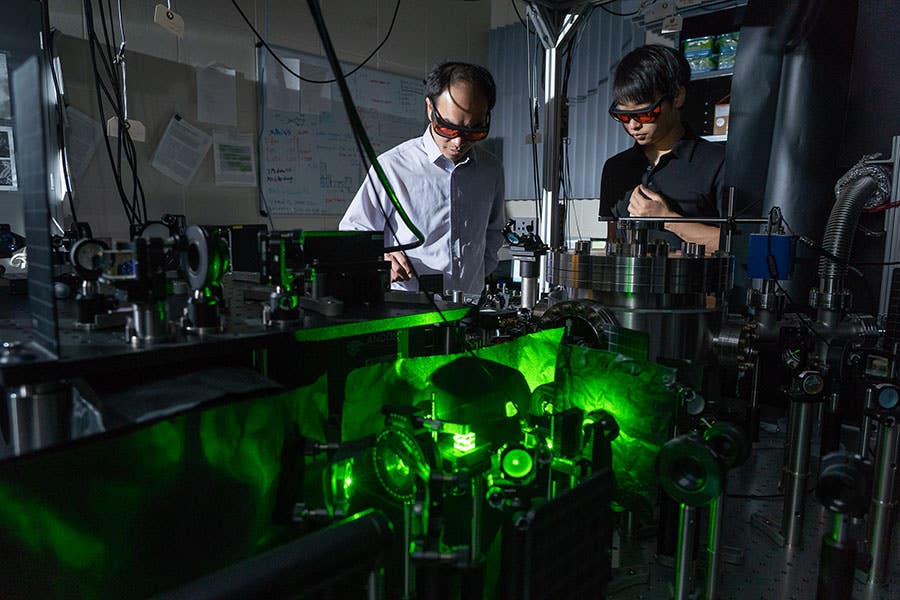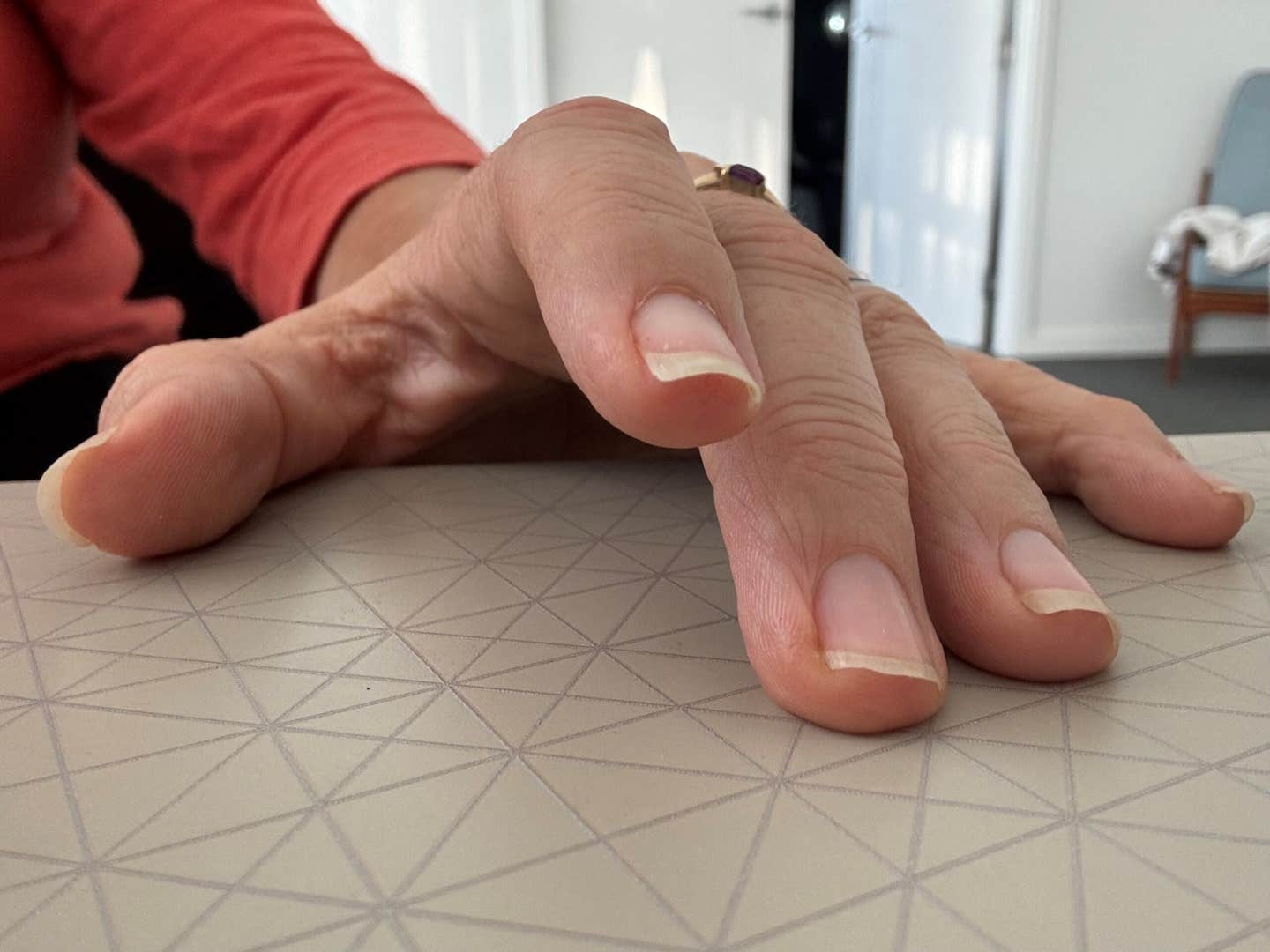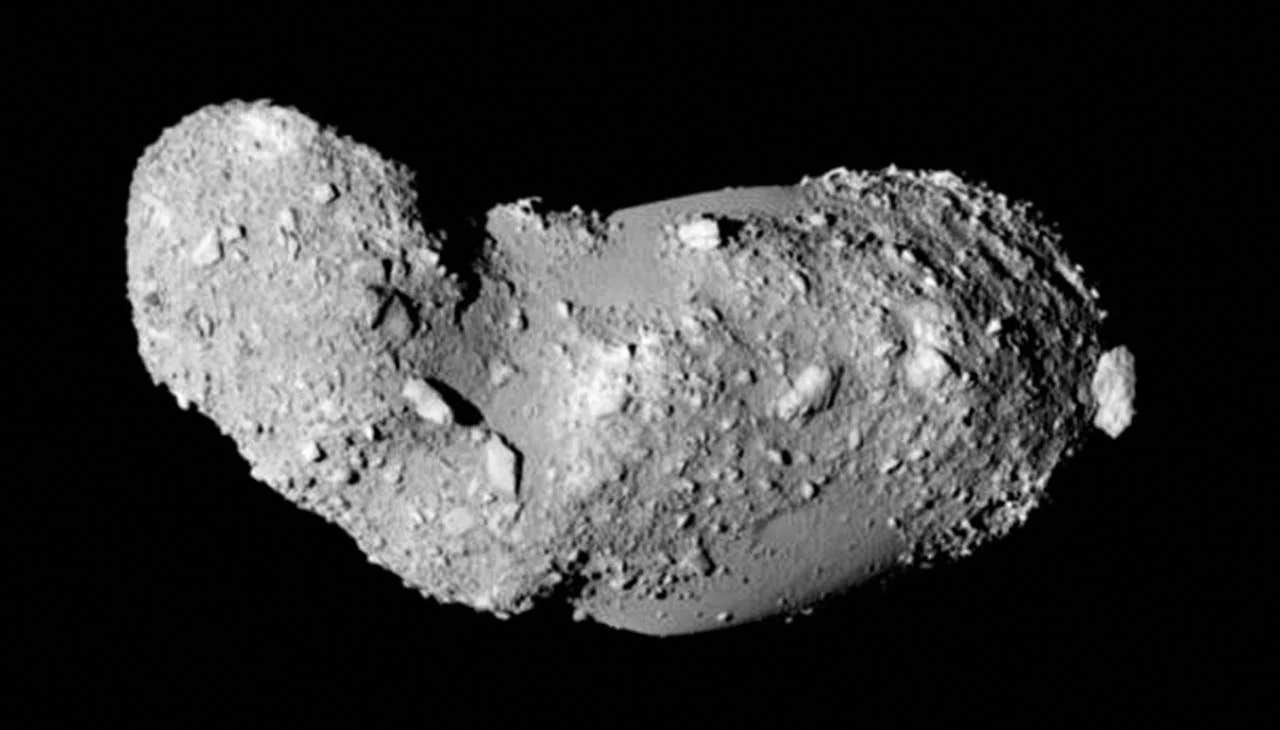Levitating diamonds spin at 1.2 billion RPM to unlock quantum gravity
Physicists levitate and spin nanodiamonds in vacuum to explore quantum gravity and achieve new control over spin qubits.

Tongcang Li
Assistant Professor of Physicists levitate and spin nanodiamonds in vacuum to explore quantum gravity and achieve new control over spin qubits. (CREDIT: Purdue University / Charles Jischke)
Levitating and spinning diamonds might sound like science fiction, but they’re now part of a bold effort to study the foundations of the universe. In a groundbreaking experiment, researchers have levitated tiny diamonds in a vacuum and rotated them at speeds reaching 1.2 billion times per minute. These spinning diamonds are more than a spectacle—they're helping scientists explore the strange rules of quantum physics and how they might connect with gravity.
This leap forward came from a team at Purdue University that specializes in quantum science and engineering. Their work allows scientists to better measure and control what are known as spin qubits—tiny units of quantum information housed inside fluorescent nanodiamonds.
Diamonds That Float and Spin in a Vacuum
Inside a vacuum chamber, nanodiamonds about 750 nanometers wide were made to levitate using a carefully designed ion trap. These diamonds were created using high-pressure, high-temperature processes and then treated with high-energy electrons to form what are called nitrogen-vacancy (NV) centers. These NV centers contain electron spins, which can be used like tiny compasses to detect magnetic fields.
The research team developed a special trap to levitate these diamonds and control their spins. It includes an Ω-shaped stripline and a set of electrodes to apply electric fields. This setup traps the diamond, drives its rotation, and allows scientists to shine lasers on it to read out the spin state.
“For the first time, we’ve performed optically detected magnetic resonance measurements on a nanodiamond levitated in high vacuum,” said Tongcang Li, one of the lead researchers. “We can even control the spins of the NV centers while the diamond is spinning.”
How Light and Rotation Reveal the Quantum World
A green laser causes each nanodiamond to glow red, revealing its spin state. Meanwhile, an infrared laser bounces off the rotating diamond, allowing scientists to monitor how fast and in what direction it's spinning. The light scatters like rays from a spinning disco ball, giving away its motion.
The team was able to rotate these diamonds as fast as 20 megahertz—equal to about 1.2 billion revolutions per minute. That’s more than a thousand times faster than the best mechanical systems have achieved with similar materials. And this speed isn’t just for show. It helps push the quantum spins into new territory where strange behaviors emerge.
Related Stories
One of those behaviors is called the Berry phase. This quantum effect changes how the spin responds as the diamond rotates, similar to how a spinning top might lean in a new direction due to motion. Observing this effect confirms that the spin qubits are strongly influenced by the diamond's rotation.
This relationship between mechanical motion and spin allows for more than just cool visuals. It offers tools to study the deepest laws of physics.
Why This Work Matters for Science and Technology
Levitated particles in vacuum are special because they’re cut off from most outside disturbances. Without much air or heat to interfere, scientists can isolate and control them with incredible precision. This makes levitated systems ideal for testing fundamental theories and for precision measurement tools like gyroscopes and field sensors.
Levitated nanodiamonds with spin qubits are especially powerful. They combine the isolation of floating particles with the sharp sensing abilities of quantum spins. This could lead to rotational matter-wave interferometers, new kinds of accelerometers, and highly sensitive electric field detectors.
In earlier attempts, scientists often failed to keep diamonds levitated under high vacuum. Most systems lost the diamonds when pressure dropped below 0.01 Torr. Others couldn’t read the spin signals well enough to do any quantum measurement. But this new setup avoids those issues. By improving the trap and reducing heat from detection lasers, the team maintained stable levitation at pressures below 10⁻⁵ Torr while controlling and reading the spin states.
The internal temperature of the levitated diamond stayed at a manageable 350 K—about 170°F—even in the high-vacuum environment. This matters because too much heat can ruin the spin state, making measurements impossible.
The success opens the door to even deeper experiments. “General relativity and quantum mechanics are two of the most important discoveries of the 20th century,” explained one of the scientists. “But we still don’t know how gravity connects to quantum physics. These experiments help us explore that link.”
A Platform for Testing Quantum Gravity
Theories of quantum gravity aim to combine Einstein’s general relativity with the odd rules of quantum mechanics. So far, scientists have not found experimental proof of such a union. That’s where spinning diamonds could help.
By placing quantum bits inside rotating objects, physicists can watch how gravity might affect those spins. The idea is to build large-scale quantum superpositions—states where the particle exists in multiple places or configurations at once. If these superpositions can be achieved, they could test whether gravity follows the rules of quantum mechanics.
In this way, spinning diamonds aren’t just cool tools; they are possible bridges between two major theories of science.
This experiment might also lead to more practical tools. The U.S. Air Force, for example, already uses optically levitated nanoparticles to improve navigation and communication systems. As techniques get better, more industries could benefit.
Postdoc Yuanbin Jin, emphasized that their lab was uniquely equipped for this kind of work. “We have two custom-built systems designed just for levitated optomechanics. And the on-campus nanotech center allows us to build the special traps we need.”
Built by Hand and Optimized with Software
Creating the trap involved advanced tools. The team used software simulations to test different designs and optimize how well they trapped diamonds and transmitted microwaves. The final version includes extra electrodes that let them steer and spin the diamonds easily. It was built on a sapphire wafer using a gold layer just 300 nanometers thick.
“We can change the direction of the spinning just by adjusting the voltage,” said PhD student Kunhong Shen. “When the drive is off, the diamond spins in random directions, like a tangled ball of yarn.”
The researchers credited their success to the creativity and hard work of students, postdocs, and outside collaborators. Graduate students helped design and test the setup. Postdoctoral researchers led the assembly. The team collectively discussed the results, with contributions from Alejandro Grine of Sandia National Laboratories and Chong Zu from Washington University in St. Louis, who offered suggestions to improve the experiment and manuscript.
With these results, the field of levitated optomechanics reaches a new level. Reviewers called the study a milestone and a defining moment for the discipline.
While many challenges remain—such as scaling the technique or building full quantum sensors—this work shows it’s possible to levitate, rotate, and control the spin states of a diamond in high vacuum. It’s a technical and scientific breakthrough that brings physics one step closer to answering some of its biggest questions.
Research findings were published in the journal Nature Communications.
Note: Materials provided above by The Brighter Side of News. Content may be edited for style and length.
Like these kind of feel good stories? Get The Brighter Side of News' newsletter.
Joshua Shavit
Science & Technology Writer | AI and Robotics Reporter
Joshua Shavit is a Los Angeles-based science and technology writer with a passion for exploring the breakthroughs shaping the future. As a contributor to The Brighter Side of News, he focuses on positive and transformative advancements in AI, technology, physics, engineering, robotics and space science. Joshua is currently working towards a Bachelor of Science in Business Administration at the University of California, Berkeley. He combines his academic background with a talent for storytelling, making complex scientific discoveries engaging and accessible. His work highlights the innovators behind the ideas, bringing readers closer to the people driving progress.



